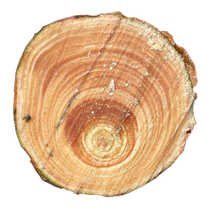
DLOUHA Jana
- INRAE, Nancy, France
- Biology of wood in living trees , Wood properties and wood products
- recommender
Recommendations: 0
Review: 1
Review: 1

Modelling the growth stress in tree branches: eccentric growth vs. reaction wood
An important contribution to the description of growth stresses in branches of adult trees based on a new model and an optimisation process with digitised branches.
Recommended by Erwin Dreyer based on reviews by Jana Dlouha and 1 anonymous reviewerThis interesting article (van Rooij et al, 2023) proposes an innovative modelling approach to the question of the biomechanics of a growing branch. The main aim is to model the “growth stress” (Fournier et al, 2013) it is exposed to while developing its radial structure in response to increasing weight. The proposed model is very interesting and novel with respect to the existing literature on this important topic in tree biology. The model bases on two major components of the structure of a growing branch: the eccentricity (the branch is usually thicker vertically than horizontally, which may provide the strength to resist the weight) and the production of reaction wood (Barnett et al, 2014) on one side of the branch which produces asymmetric forces against gravity. The reaction wood is either tension wood (in hardwood trees, e.g., angiosperms) or compression wood (in softwood trees, e.g., gymnosperms). The model is clearly described and based on a number of explicit and already described concepts with some simplifications (no local irregularities like nodes or holes, only vertical bending taken into account, branch growing straight at a constant angle, …) whose potential effects are nicely discussed and on a reliable and detailed set of analytical equations. The model addresses the dynamic changes resulting from branch growth, i.e., mainly radial growth which results in an accumulation of wood and in increasing mass and “growth stress”.
The model is tested during a virtual experiment using a small set of data from a large pine tree (taken as an example of a softwood conifer tree) and a cherry tree (taken as an example of a hardwood tree). The optimisation test uses the mean allometric values from 30 branches of each individual tree as an entry to the model. This test of the optimality of the model is a very useful prerequisite for the adoption of the model. One might however argue that some replicate examples from other tree species would have been welcome to better represent the potential inter-specific variability in the two groups (softwoods vs. hardwoods). Indeed, there is a lack of suitable data available to properly test the underlying hypotheses under different conditions (growth angles, wood densities, growth rate, branch aging, ….). However, the presented computations allow testing the plausibility of the model and of its main conclusions, with respect to some “growth stress” values reported in the literature. The results confirm that the contribution of reaction wood is dominant, even if the eccentricity of the branches bears a significant contribution in the two tested cases.
The present preprint has the potential to act as the foundation for some additional research that might challenge its main conclusions and provide (hopefully) more support to the main conclusion that eccentricity plays a minor but still significant role in ensuring the stability of the growing branches and that the main stabilising effects are produced by reaction wood.
This version of the preprint is now suitable for a recommendation. However, it still suffers a few minor typos and language issues that the authors might correct during further steps in the publication process (a final version as a preprint, or submission to a journal chosen by the authors). Among those typos, the fact that Prunus avium is a cherry tree and not a birch. Similarly, several references need be corrected and completed, and more care should be in general given to the scientific species names….
In conclusion, this modelling exercise and the optimisation procedure used here underline once more the importance of reaction wood as a stabiliser of the three-dimensional architecture of trees not only in the trunk (where it has been studied in detail), but also in the lateral and sometimes quite heavy branches.
Anyway, I believe this preprint (and the version potentially published in a journal) will become an important reference for future research about the biomechanics of branches and of tree crowns in general, and that it will trigger further research in this direction.
REFERENCES
Arnoul van Rooij, Eric Badel, Jean-François Barczi, Yves Caraglio, Tancrede Almeras, and Joseph Gril. (2023) Modelling the growth stress in tree branches: eccentric growth vs. reaction wood. HAL, ver. 4 peer-reviewed and recommended by Peer Community in Forest and Wood Science. https://hal.science/hal-03748026v4
Mériem Fournier, Jana Dlouha, Gaëlle Jaouen, Tancrède Almeras (2013). Integrative biomechanics for tree ecology: beyond wood density and strength. Journal of Experimental Botany, 60 (15), pp.4397-
4410. https://doi.org/10.1093/jxb/ert279
J.R. Barnett, Joseph Gril, Pekka Saranpää (2014) Introduction, In: The Biology of Reaction Wood, Springer Series in Wood Science, Springer (pub), Gardiner B., Barnett J., Saranpää P., Gril J (eds), p. 1-11. https://doi.org/10.1007/978-3-642-10814-3_1